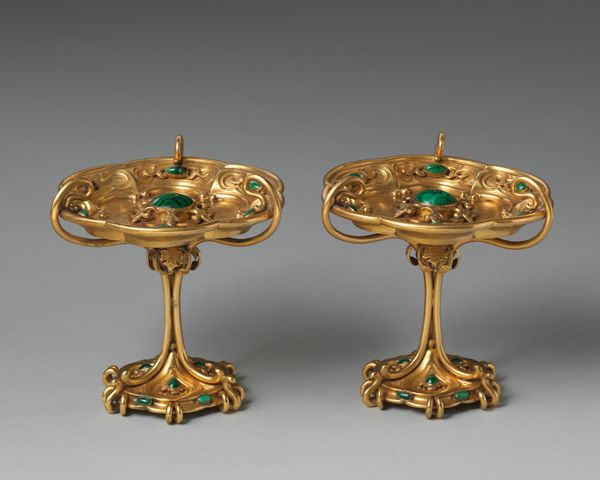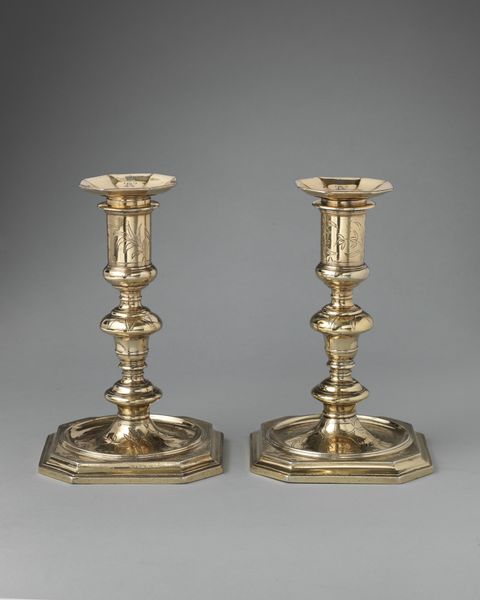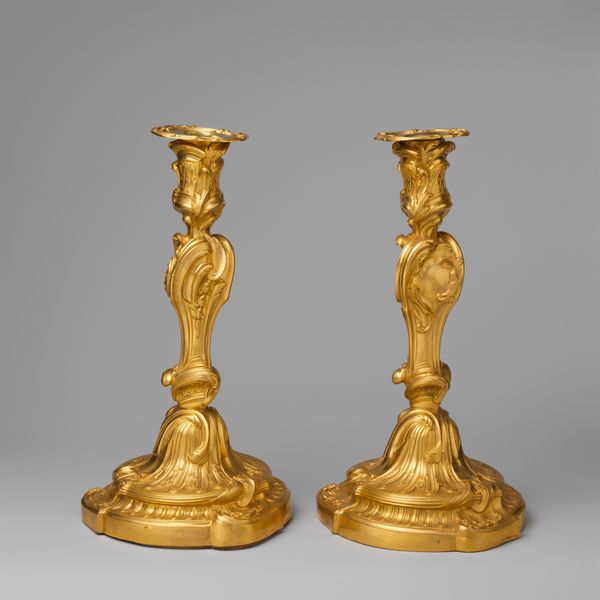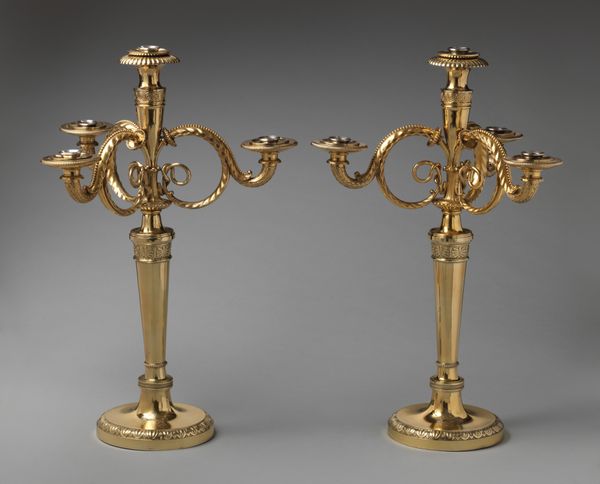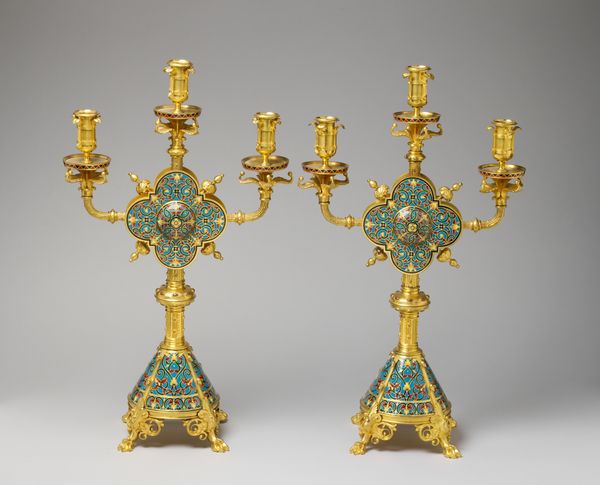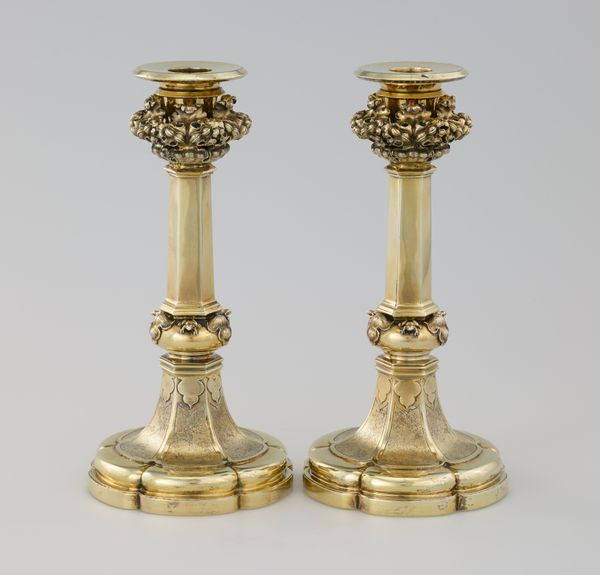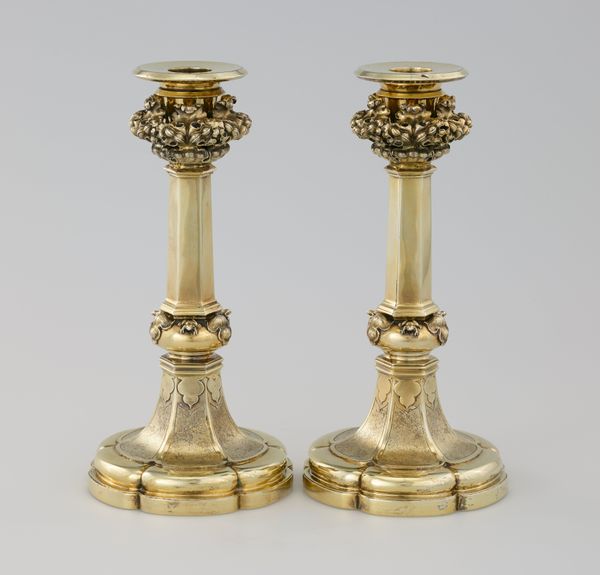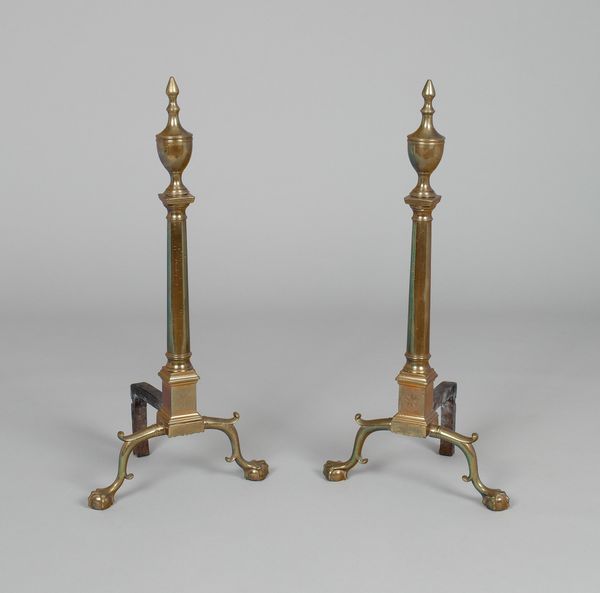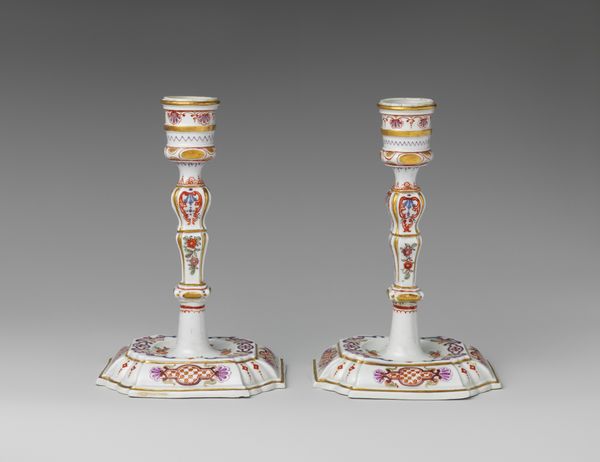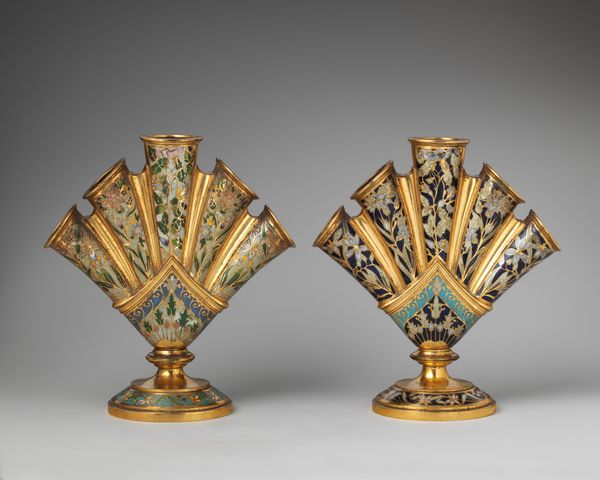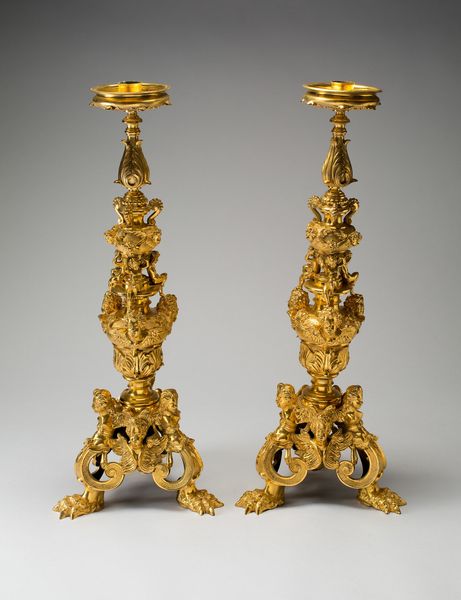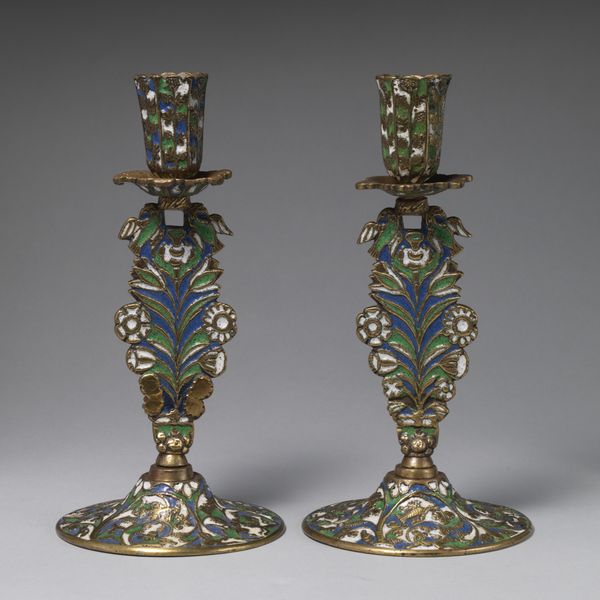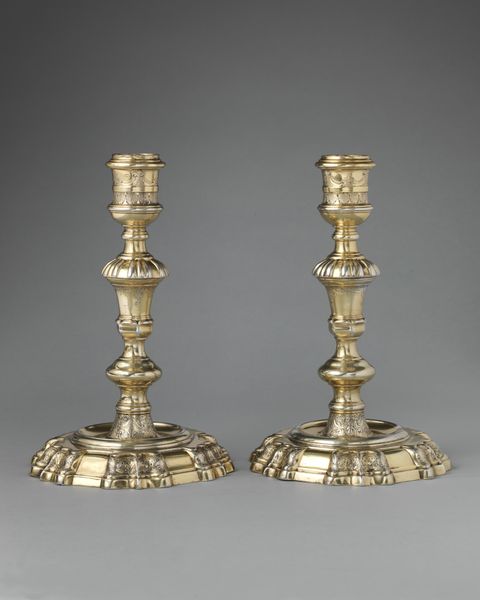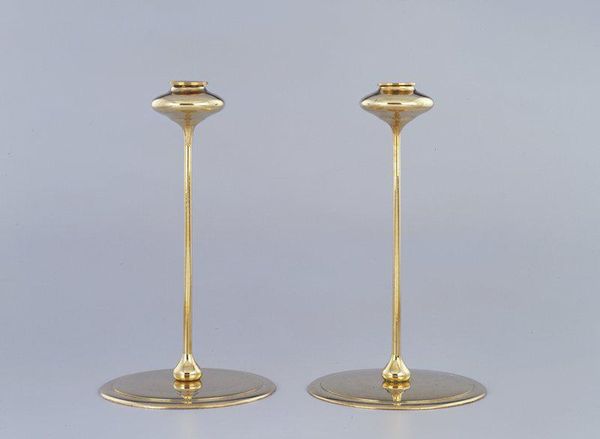
bronze, sculpture
#
bronze
#
sculpture
#
decorative-art
Dimensions: Height: 8 3/4 in. (22.2 cm)
Copyright: Public Domain
Curator: Here we have a pair of bronze candlesticks crafted by Asprey in 1851, currently held at the Metropolitan Museum of Art. What are your first thoughts? Editor: Elegant and perhaps a touch excessive? The gilt bronze practically glows, and those green stone inlays add a definite pop. They look quite ornate. Curator: Ornate, yes, fitting for the Victorian era when Asprey catered to a wealthy clientele eager to display their status. These weren't just functional objects; they were statements. Consider the foundry work necessary to cast such intricate detail in bronze, and then gild it! It speaks to a high degree of specialization of labor and the industrial capabilities of the time. Editor: And the use of bronze, even when gilded, hints at a specific kind of aesthetic. Bronze has this heft and permanence, a visual language that resonates with the socio-political atmosphere of stability. Curator: Precisely. These objects become symbols of a confident empire. The original owners of the candlesticks undoubtedly displayed them prominently in their home, possibly alongside other luxurious items acquired during the period of heightened industrialization and global trade. Editor: The candlesticks remind us of the grand interiors of the period, often illuminated by candlelight, reflecting off similarly gilded mirrors and picture frames. It wasn't just about possessing objects; it was about constructing a spectacle of wealth and power. We can imagine these gracing the dining table during formal gatherings. Curator: Their existence reflects not just the wealth of the patron, but also the artistry of the workers involved. Asprey outsourced and assembled creations by specialized laborers from multiple studios, with individuals responsible for the casting, chasing, gilding, and setting of the green gemstones that add vibrant pops to the gold of the candlestick. These works were highly collaborative across material disciplines, moving the process beyond a sole artistic vision. Editor: Indeed, thinking about their display prompts reflections on the curated life of the wealthy in that era. Thanks for shedding light on the historical context and shedding light on its artistic roots. Curator: Thank you. Exploring art through its materials always reveals something unique and gives you new appreciation for objects.
Comments
No comments
Be the first to comment and join the conversation on the ultimate creative platform.
